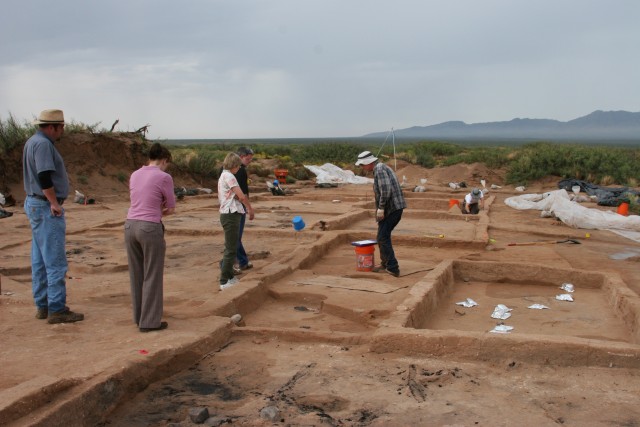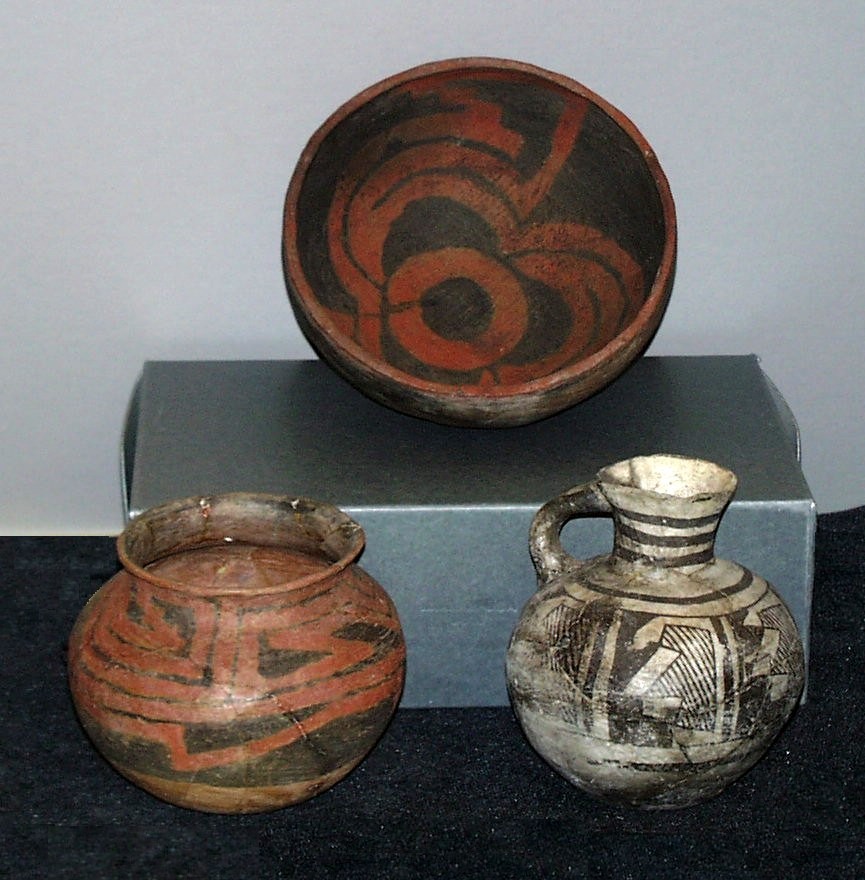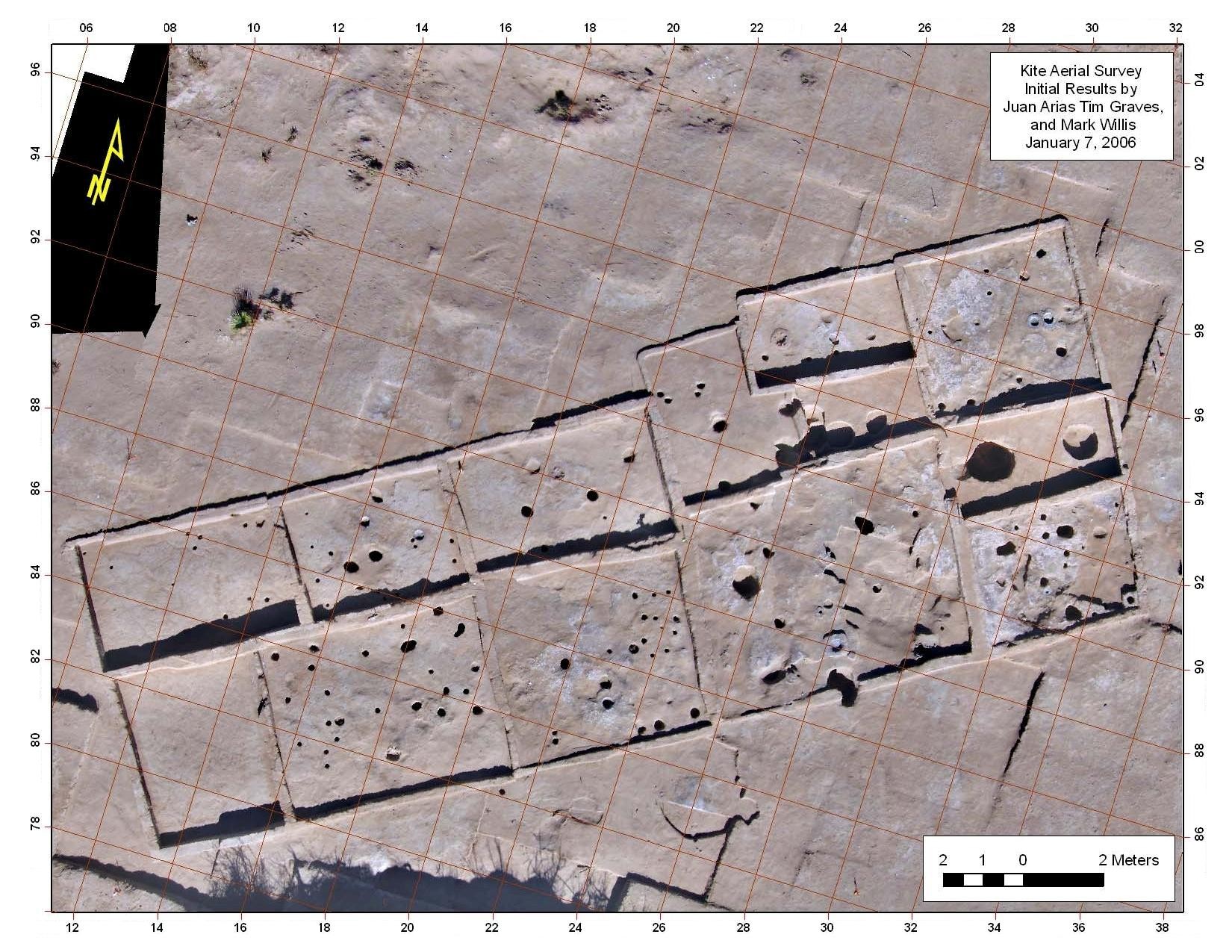FORT BLISS, Texas, April 13, 2011 -- Selfless service, a qualified, passionate team and committed partnerships across state borders was the winning combination for the Fort Bliss Cultural Resources Management Team as they won the fiscal year 2010 Secretary of the Army Environmental Award for an installation.
"This means a lot to us. But it also means that we are doing our job right," said Brian Knight, acting conservation branch chief for Fort Bliss. "Our leaders put a great deal of faith in us. They gave us the tools and freedom that we needed in order to come up with unique solutions to protect our cultural sites while working to maximize the land available for training."
Knight led a team of seven archeologists and one historical architect to finalize the survey and inventory approximately 85 percent of the installation's 1.2 million acres to meet federal and state standards. The dedicated team manages more than 19,000 archeological sites with more than 550 historic buildings, structures and landscapes ranging from Paleo-Indian campsites dating back to about 10,000 B.C.E. to modern day consultations with five Native American tribes.
"Fort Bliss has the challenge of conducting an intense training mission in an area rich in historic properties, particularly prehistoric archeology," said Katharine Kerr, program analyst for the Advisory Council on Historic Preservation. "The program shows a dedication to meeting that challenge and preserving the irreplaceable knowledge of the nation's history."
When training requirements are identified, trainers and environmental managers must work together to identify new training ground. Cultural Resources, or CR, managers are experts in the historical nature of the property at Fort Bliss. The area has been long identified by regional experts as having huge cultural and historical potential for the country as archeologists continue to learn who came before us, how they lived and where they have gone.
The environmental managers and trainers can sometimes be seen as having opposing missions. While the CR program works to preserve the unique and rich American heritage located on the installations property, Knight explained his team's mission is focused on enabling the Army to complete their mission. The CR team accomplishes this by thinking outside of the box and developing meaningful relationships based on trust.
"We owe much of our success to the cooperative nature of our federal and state regulators," said Knight. "We consult with the Texas and New Mexico state historic preservation officers on many significant projects. It's important for state agencies and military installations to understand each other and partner together."
One example of the trust and cooperative nature of the Fort Bliss CR program is the "Red Zone" concept of mitigation. Successful negotiation with state representatives led to the identification of potentially significant areas which have been set aside for future research.
These sometimes "locally famous" sites serve as mitigation areas and are off limits to military training. These representative examples make up less than one percent of the available training land and serve as examples of the types of sites found on Fort Bliss. In exchange, units are allowed free maneuver in the areas outside of these "Red Zones," even though they may hold some cultural significance.
The installation annually trains thousands of active and reserve military personnel from all the branches of the Armed Services. It is also making its way through the base realignment and closure program and "Grow the Army" initiatives which will result in a total population of approximately 90,000 civilians, Soldiers and their Family members at the end of FY 2013.
"One of the most important things we can do at Fort Bliss is to allow our Soldiers to train as they fight," said Command Sgt. Maj. William A. Green IV, Fort Bliss garrison command sergeant major. "This allows Soldiers real 'boots on the ground' capabilities and realistic training. We also have the capability to fire any weapons system in the military arsenal, which makes Fort Bliss unlike any other post in the world."
Fort Bliss also has one of the largest and most extensive cultural resource programs in the Army, reaching across Texas and New Mexico borders. The restricted nature of the military installation helps ensure historical property is protected and preserved for future generations and research opportunities.
"With these capabilities, also comes the responsibility for our environment," explained Green. "Fort Bliss is at the leading edge of taking care of our land, water and air. Our environmental teams work continuously with leaders not only on post but with city, state, and federal leaders. This ensures that we not only train our Soldiers to guard our nation's freedom, but that we preserve our environment for future generations."
The installation opens its doors to the public when possible to allow them to share in the treasured artifacts and rare historical data found on its grounds. Local schools and archeologists are welcomed at the curatorial facility or to tour an excavation project.
Soldiers and family members have hands-on learning opportunities where they learn the worth of respecting areas of cultural significance and to protect and preserve them as a taught value. Officers go through specialized CR awareness training.
This approach has been known to have real life meaning when Soldiers are deployed overseas as they have been taught to respect other cultures and protect historically significant properties and structures.
Related Links:
STAND-TO!: Secretary of the Army Environmental Awards Program








Social Sharing